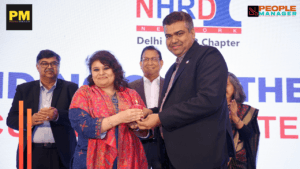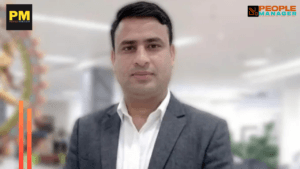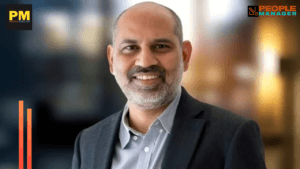Meta CEO Mark Zuckerberg’s stern message to employees on cutting 10,000 jobs
CEO Mark Zuckerberg's post on the layoffs read, "I just shared this update on our year of efficiency with Meta employees..." - Meta is building the future of human relationships, and today I want to share some updates on our Year of Efficiency that will help us to be a better and performance oriented technology company.

Meta CEO Mark Zuckerberg’s stern message to employees on cutting 10,000 jobs
The CEO of Meta (formerly Facebook), Mark Zuckerberg, has written a letter to his employees after announcing a new round of layoffs of about 10,000 employees this week. Meta CEO Mark Zuckerberg’s stern message to employees, despite failing to meet the company’s efficiency standards
The CEO urged employees to work from the office to increase efficiency. He also said that the company’s analysis showed that employees who worked in the office performed better than those who worked remotely.
Mark Zuckerberg said, “As part of our Year of Efficiency, we’re focused on understanding this further and finding ways to make sure people build the connections they need to work effectively.”
“In the meantime, I encourage you all to find more opportunities to work with your colleagues in person… “Face-to-face meetings help build relationships and get more done,” Mark Zuckerberg added.
CEO Mark Zuckerberg’s post on the layoffs read, “I just shared this update on our year of efficiency with Meta employees…” – Meta is building the future of human relationships, and today I want to share some updates on our Year of Efficiency that will help us do that.
The goals of this work are:
(1) Make us a better technology company, and
(2) Improve our financial performance in a challenging environment so that we can realize our long-term vision.
Our efficiency work includes multiple parallel work streams to improve organizational efficiency, dramatically increase developer and tool productivity, optimize distributed work, eliminate waste from unnecessary processes, and much more. I’ve tried to be open about all the work in progress, and while I know many of you’re excited about it, I’m also aware that the thought of impending organizational change causes uncertainty and stress. I hope that we can make these organizational changes as soon as possible so that we can put the time of uncertainty behind us and focus on the important work that lies ahead.
Over the next few months, organizational leaders will be announcing restructuring plans aimed at streamlining our organizations, eliminating lower priority projects, and reducing hiring. In light of the lower hiring numbers, I’ve made the difficult decision to further downsize our recruiting team. We’ll inform members of the recruiting team tomorrow if they’ll be impacted. We expect to announce restructuring and layoffs in our Tech groups at the end of April and in our Business groups at the end of May.
In a few cases, it may take until the end of the year to complete these changes. Our timelines for the international teams will also be different, and local leaders will provide more details. Overall, we expect to reduce headcount by about 10,000 and close about 5,000 additional open positions that we haven’t yet filled.
This is going to be tough, and there’s no way around it. It’ll mean saying goodbye to talented and passionate colleagues who have been part of our success. They have dedicated themselves to our mission, and I’m personally very grateful for their efforts. We’ll support people as we have done in the past and treat everyone with the gratitude they deserve.
After the restructuring, we plan to lift the hiring and transfer freeze in each group. We also plan to complete the analysis of our hybrid work year of learning this summer so that we can improve our distributed work model. We also plan to increase developer productivity and improve our processes throughout the year.
When I talked about efficiency this year, I said that part of our work will be to reduce positions – and that will serve both to build a leaner, more technical company and to improve our business performance to enable our long-term vision. I understand that this update may still be surprising, so I want to provide some broader context about our vision, culture and operating philosophy.
Building a better technology company
Every day, Meta creates new opportunities for people to feel closer. This is a fundamental human need that is perhaps more important than ever in today’s complex world. We hope that one day we can make it possible for everyone to feel as strong a sense of connection as you do when you’re with someone you love.
We do leading work in a wide range of advanced technologies and then distill them into inspiring products that improve people’s lives. We do this with AI to help you express yourself creatively and discover new content, the Metaverse to provide a real sense of presence, new media formats to create richer experiences, encryption to enable you to communicate privately in more and more ways, and business tools to reach customers, create opportunities, and drive business.
As I’ve talked about efficiency this year, I’ve said that part of our work will involve removing jobs — and that will be in service of both building a leaner, more technical company and improving our business performance to enable our long-term vision. I understand that this update may still feel surprising, so I’d like to lay out some broader context on our vision, our culture, and our operating philosophy.
Building a Better Technology Company
Every day Meta builds new ways for people to feel closer. This is a fundamental human need that may be more important in today’s complex world than ever. One day we hope to enable every person to feel as strong a sense of connection as you feel when you’re physically with someone you love.
We do leading work across a wide range of advanced technologies and then distill that into inspiring products that improve people’s lives. We do this with AI to help you creatively express yourself and discover new content, with the metaverse to deliver a realistic sense of presence, with new media formats to create richer experiences, with encryption to let you communicate privately in more and more ways, and with business tools to help reach customers, create opportunity and grow the economy.
Simply put, if you want to invent the future or apply the best ideas to reach people to the greatest extent possible, meta is the best place to do it.
With that in mind, here are some of the cultural principles that guide our efficiency work to make Meta an even stronger technology company:
Flatter is faster
It’s common knowledge that each level of hierarchy delays and risk-avers information flow and decision-making. Typically, each manager reviews the work and polishes off a few rough edges before sending it higher up.
In our Year of Efficiency, we’ll streamline our organization by eliminating several layers of management. As part of this, we’ll ask many managers to make individual contributions. We’ll also get individual employees to report to almost every level – not just the lowest – so that the flow of information between employees and management will be faster.
Of course, there are trade-offs. We still believe that it’s very important to manage each individual employee, and that’s why we generally don’t want managers to have more than 10 direct reports. Today, many of our managers have only a few direct reports. This made sense to optimize onboarding new managers and maintaining buffer capacity when we were growing our organization faster, but now that we don’t anticipate such rapid staff growth, it makes more sense to fully utilize each manager’s capacity and defragment the layers as much as possible.
Leaner is better
Since we reduced our workforce last year, one surprising result is that many things have gone faster. Looking back, I underestimated the indirect costs of lower-priority projects.
It’s tempting to think that a project is net positive as long as it creates more value than its direct costs. But the project needs a leader, so we might take a great employee from another team, or we might take a great engineer and put him in a leadership role, both dispersing talent and creating more layers of leadership.
The project team needs space, and perhaps the entire product group is split across multiple floors or time zones, making communication difficult for everyone. The project team needs laptops and HR services and may want to hire more engineers, which leads to hiring even more IT, HR and recruiters, and now these organizations are growing and becoming less efficient and responsive to higher priority teams as well.
Perhaps the project overlaps with another team’s work, or a custom technical system was developed when it should have used the general infrastructure we had already built. Indirect costs add up, and it’s easy to underestimate them.
A leaner organization will deliver on its highest priorities faster. Employees will be more productive, and their work will be more fun and fulfilling. We’ll become an even bigger magnet for the most talented employees. That’s why, in our Year of Efficiency, we’re focusing on eliminating projects that are duplicative or of lower priority, and making every organization as lean as possible.
Keeping technology at the center
We’re a technology company, and our most important deliverable is what we develop for people. Everything else we do is in service of that mission.
As we’ve grown, we’ve hired many leading experts in areas outside of technology. This helps us develop better products, but with many new teams, there has to be a conscious focus on ensuring that our company remains first and foremost technologists.
As we add different groups, our product teams naturally hire more functions to handle all the interactions with these other groups. If we were to reallocate product teams toward technology only, the leaner product teams would be overwhelmed with the volume of interactions with other groups.
As part of the Year of Efficiency, we’re focusing on achieving an optimal balance between engineers and other roles. It’s important for all groups to become leaner and more efficient so that our technology groups can operate as leanly and efficiently as possible. We’ll ensure that we continue to meet all of our critical and legal obligations while finding ways to work more efficiently.
Investing in tools to become more efficient
We’re focused on the long term. That means investing in tools that will make us most effective for many years to come, not just this year – whether it’s developing AI tools that allow engineers to write better code faster, enabling us to automate workflows over time, or identifying outdated processes that we can phase out.
Our work on developer tools is ongoing and showing good results. For example, Buck2 is our new open source build system that compiles builds about 50% faster, allowing engineers to spend more time iterating and less time waiting. Our analysis found that engineers whose builds were accelerated by Buck2 often produced significantly more code.
Face-to-face presence helps build relationships and get more done
We’re committed to distributed work. That means we’re also committed to continuous work.
Our initial analysis of performance data suggests that engineers who either started at Meta in person and then moved to a remote location or stayed in person performed better on average than employees who started remotely.
This analysis also shows that engineers earlier in their careers perform better, on average, when they work in person with their teammates at least three days per week. This needs further study, but our hypothesis is that it’s still easier to build trust in person and that these relationships help us work more effectively.
As part of our Year of Efficiency, we’re focused on understanding this better and finding ways to ensure that people build the connections they need to work effectively. In the meantime, I encourage all of you to find more opportunities to work with your colleagues in person.
Improving business performance in a tough economic environment
In addition to building a better technology company, our other goal for the Year of Efficiency is to improve our business performance in the face of new economic realities.
Profitability enables innovation. By running our business more efficiently, we have the resources and confidence to achieve our long-term vision by delivering sustainable financial results that make us an attractive company to work for and invest in.
When I wrote my first letter to investors during our IPO, I described a fundamental principle that remains true today: “We don’t build services to make money; we make money to build better services.”
For most of our history, we enjoyed rapid revenue growth year after year and had the resources to invest in many new products. But last year was a sobering wake-up call. The global economy changed, competitive pressures increased, and our growth slowed significantly. We cut our budgets, downsized our real estate portfolio, and made the difficult decision to lay off 13% of our workforce.
At this point, we should expect this new economic reality to continue for many years. Higher interest rates will lead to a leaner economy, more geopolitical instability will lead to more volatility, and increased regulation will lead to slower growth and higher innovation costs. Given this outlook, we’ll need to operate more efficiently than we have in our previous downsizing to be successful.
Faced with this new reality, most companies will scale back their long-term vision and investments. But we have the opportunity to be bolder and make decisions that other companies cannot. That’s why we’ve put a financial plan in place that allows us to invest heavily in the future while delivering sustainable results as long as we run each team more efficiently. The changes we’re making will enable us to deliver on this financial plan.
I believe we’re working on some of the most transformative technologies our industry has ever seen. Our single biggest investment is advancing artificial intelligence and integrating it into each of our products. We have the infrastructure to do this on an unprecedented scale, and I believe the experiences that will be enabled will be amazing.
Our leading work in building the metaverse and designing the next generation of computing platforms also remains central to defining the future of social connectivity. And our applications continue to grow and connect nearly half the world’s population in new ways. This work is incredibly important, and the stakes are high. The financial plan we’ve put in place puts us in a position to deliver.
Looking to the future
I realize that announcing restructuring and layoff plans months in advance is a difficult time. But last fall we heard that you wanted more transparency on restructuring plans, and that’s what I want to provide here. I hope it’ll help us get through the next few months and then move forward in implementing these changes, which I think will have a very positive impact on how we operate, by giving you a timeline and principles for what you can expect.
In terms of how we operate during this time, I’d encourage each of you to focus on what you can control. That is, do a good job and support your teammates. Our community is extremely resilient. Change is never easy, but I know we’ll get through it and emerge as an even stronger company that can develop better products faster and give you the opportunity to do the best work of your career.
Ultimately, Meta CEO Mark Zuckerberg’s stern message about cutting 10,000 jobs shows uncertainty about Meta’s ability to become more competitive in news norms while reducing staff globally. This message also shows the miscasting of roles that aren’t properly aligned with the company’s strategies and goals.
- FUJITRANS Corporation names Vinay Tanwar as Head – HR, India - January 16, 2026
- Duroflex Group Appoints Arkadeb Chakraborty as Chief HR Officer - January 16, 2026
- CEAT Limited Appoints Rahul Gama as SVP – Human Resources - January 16, 2026









